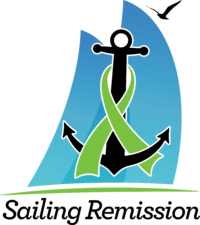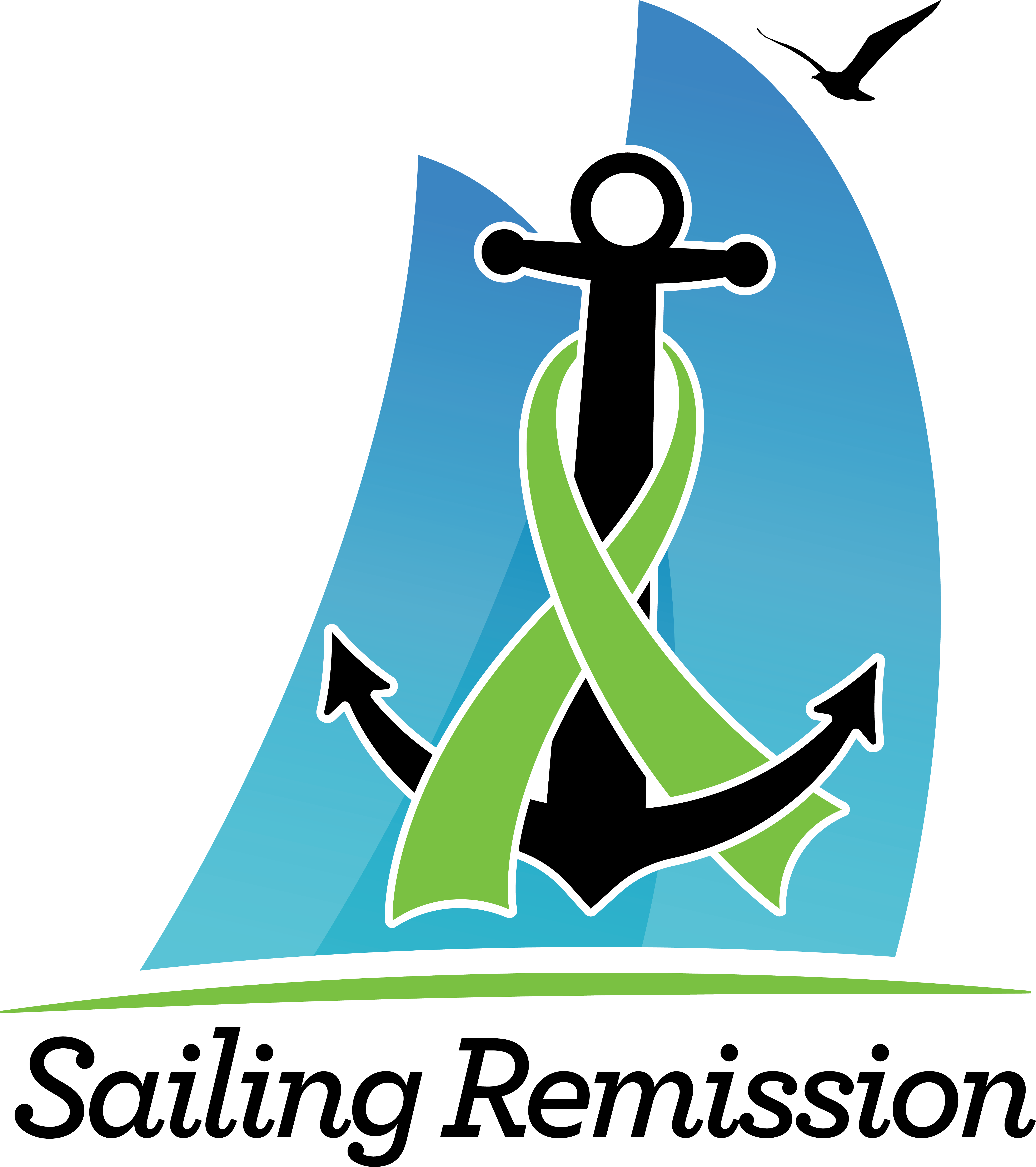Welcome back to Sailing Remission. We have exciting journeys planned for 2024 so come along and experience a di@erent part of the world. We start 2024 leaving our home base of Castle Rock, Colorado on January 1st. It is always hard to leave family and friends behind.

The Kingdom of the Netherlands owns this beautiful island located in the westernmost group of Lesser Antilles in the Caribbean Sea.
Bonaire, we arrive back on Remission docked in Bonaire. The Kingdom of the Netherlands owns this beautiful island located in the westernmost group of Lesser Antilles in the Caribbean Sea. I fell in love with the abundant flocks of flamingos. Bonaire is renowned for its pioneering role in marine conservation, crystal-clear waters and vibrant wildlife. Thus, the scuba diving is considered one of the best diving destinations in the world. Two favorites stand out in my mind as must dives, the Salt Pier and 1000 Steps. Now 1000 Steps is a bit of a stretch, but lugging scuba gear up and down 200+ steps is quite a challenge. Sad to leave this beautiful island and the friendly people on Bonaire. We set sail for Panama.
Passage to Panama, of course, no passage is completed without a bit of excitement. Bart was on late night watch [3:30am] as we were passing Venezuela about 80 mile o@ the cost. Monitoring AIS [Automated Identification System] he sees two boats travelling 9+ knots directly toward Remission. As there had been recent pirate activity with other sailors in the area, Bart was on high alert [he recorded his experience on You Tube: SailingRemission – Season I, Episode 19x]. After much tension and maneuvering Bart was able to lose the pirates [or fishing boats].
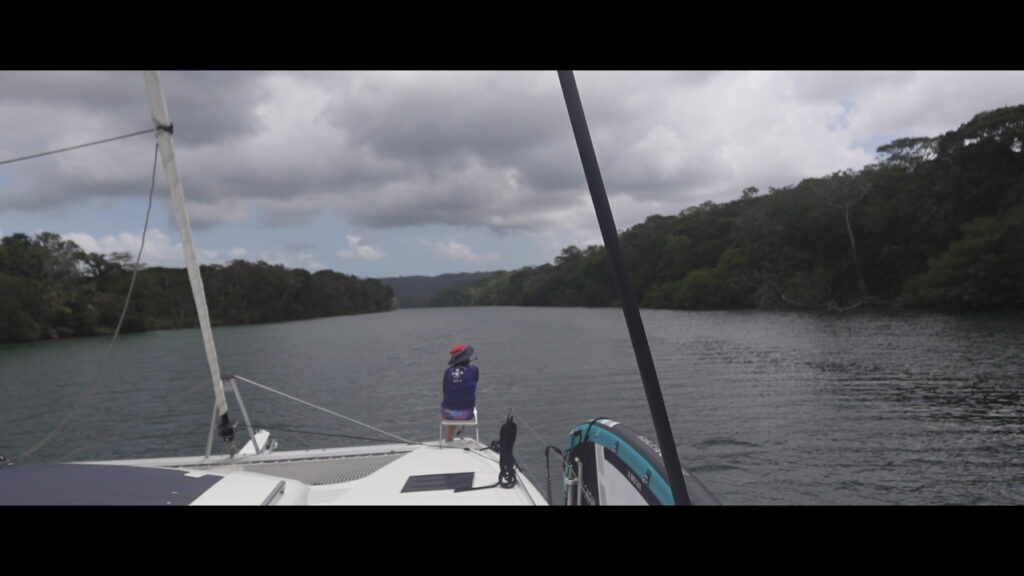
Bocas Del Toro, after 11 days at sea, we arrive in Bocas Del Toro just o@ Bocas Town
Bocas Del Toro, after 11 days at sea, we arrive in Bocas Del Toro just o@ Bocas Town. Customs and Immigration o@icials onboard Remission, we complete our entry paperwork. They always need to know your last disembarkation country. Communication was almost comical as we kept stating Bonaire and they had no idea where this country was located. After
much back and forth, it was determined the Spanish version of Bonaire is “Bo- nar- e”. We all had a good laugh once this misunderstanding was cleared up. Immigration requested to go thru our refrigerator and freezer, no issues identified. We were clear to walk to the airport and pay our entry fees. Bocas town is undergoing much needed infrastructure repairs so most of the streets are torn up. But still a cute town with plenty of tourist. We did have the opportunity to cruise around the archipelago with its lush fauna and lazy waterways. I can see how many Americans choose Bocas as their away home.
Shelter Bay, Colon, we have a day travel from Bocas to Shelter Bay. We anchor in the bay which is very rocky awaiting to have Remission pulled into dry dock. Time for the bottom of the boat to be painted. It will take approximately 15 days on dry dock which we will live onboard using a ladder to climb up and down 10 feet. Luckily the marina has shower and bathroom facilities along with a pool for our use. We take the time to travel via Uber to Panama City and stay in the old town city center. The culture of Panama and of course the shopping is abundant. My brother Larry is active in the Rotary Club and has made many trips to Panama with donations of toothbrushes, wheelchairs and much more. His friend owns a co@ee farm, so Bart and I set o@ to find some co@ee. We found some in a sweet tourist shop for $20 a half pound. It was only $6 in the local grocery store. Live and learn. Back in Shelter Bay Marina, we spent hours walking through the once US military base jungles hunting for capuchin monkeys, sloths, and holler monkeys. While we could hear holler monkeys all around us, sadly we had no sightings.
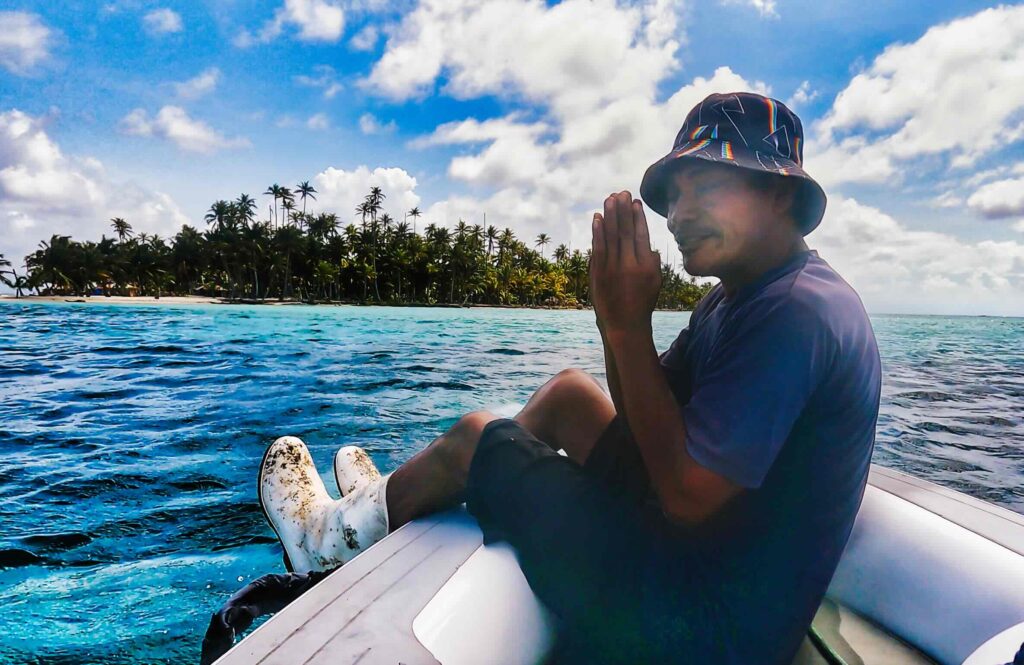
San Blas Islands
San Blas Islands, while we await our time slot to cross the Panama Canal, Bart and I take 15 days to visit the San Blas Islands. We stop in Linton Bay to overnight on our way to the islands. There are two very interesting Airbnb structures over the water. Unfortunately, months after our visit, one of the structures crumbled into the water.
The San Blas Islands of Panama is an archipelago comprising of approximately 365 islands and cay, 49 of which are inhabitant by the
indigenous Kuna people. The islands are independently governed by the Kuna people. There are no commercial enterprises anywhere with the Guna islands. The Kuna people make a living from selling their homemade crafts and molas. I purchased two molas, a beaded ankle and wrist bracelets from the cutest little five-year-old. You can find them on their island or in many cases they bring their wares out in hand carved canoes where you can shop from the comfort of your own salon. The island waters are crystal clear and o@er great snorkeling.
Panama Canal, the big reason we are in Shelter Bay is awaiting crew from Colorado to arrive and cross the Panama Canal with us. Our friends Rex and Sean arrived, and we are ready to journey through the canal. We met our line handler Jorge, he was a professional football player [soccer for our USA friends] on the Panamanian national team, accomplished musician with five di@erent instruments, and an international law lawyer. He stayed the night onboard prior to our entering the canal. At 3am we were all up, leaving the marina and meeting up with our canal advisor and two other boats. We are rafted with a 110-foot monohull in the middle [the guide boat], we are on the port side and a smaller 30-foot pleasure craft on the starboard side. We pass three locks then travel by motor [no sailing allowed] 40 miles on a lake to the last three locks. The 110-foot monohull was filled with 30 college students from all over the world attending a semester at sea. How fun is that? I don’t remember anything like that when I was in college. The last lock is streamed so our friends and family were able to watch us float up and back down the flow of the locks. It was fun to share. It takes us 13 hours from start to finish to traverse the canal. I recommend to anyone wanting to experience the canal.
The canal is open 24 hours per day. Due to years of draught conditions, the canal water is down 15 to 20 feet. This has had an impact on the number of boats that can cross the canal in a day. In a typical year 140 to 150 boats per day will cross the canal in a 24-hour period. They are currently down to only 40-50 per day [hence revenue is down]. We heard some commercial freighters
will pay up to $1M to get prioritized to the front of the line. Otherwise, they sit in the waters outside the canal on either side waiting for their turn.
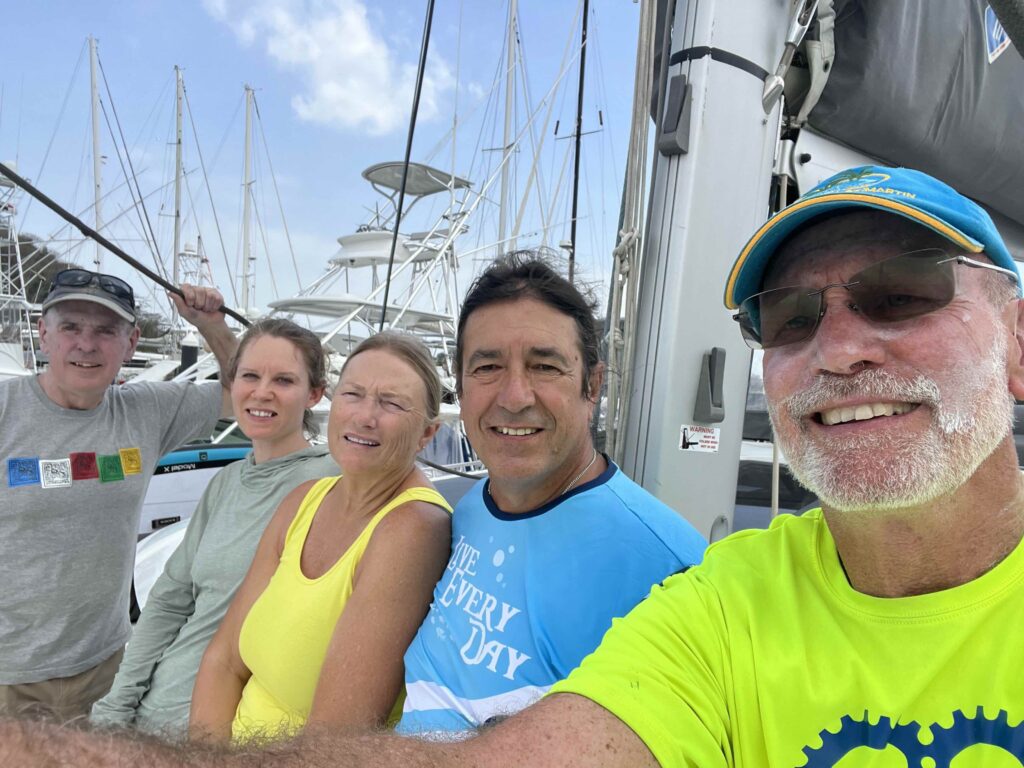
Crossing the Pacific
Crossing the Pacific, Rex and Sean have returned to Colorado and now we wait for new crew to join for the Pacific Ocean Crossing. Joe from Colorado helped crew Remission across the Atlantic Ocean last year. Joe’s childhood friend from Colorado Jim joins us as he is an adventure seeker. And finally, Alex, who we met in Granada, all the way from Finland joins as the final crew. With five of onboard, we are excited to have 3 hour shifts instead of 4- hour shifts. Bart, Joe and I can truly appreciate this on hour di@erence. We estimated our crossing to last 28 days. Crossing an ocean has its ups and downs.
We start out with 15-20 knots of wind, perfect for sailing Remission. And then the wind just disappears, time to start the engines – not as pleasant as sailing. We are trying to make our way toward the Galapagos Islands to catch the Tradewinds. We do not intend to stop in the Galapagos Islands as Bart and I have visited on dive trips twice in the past.
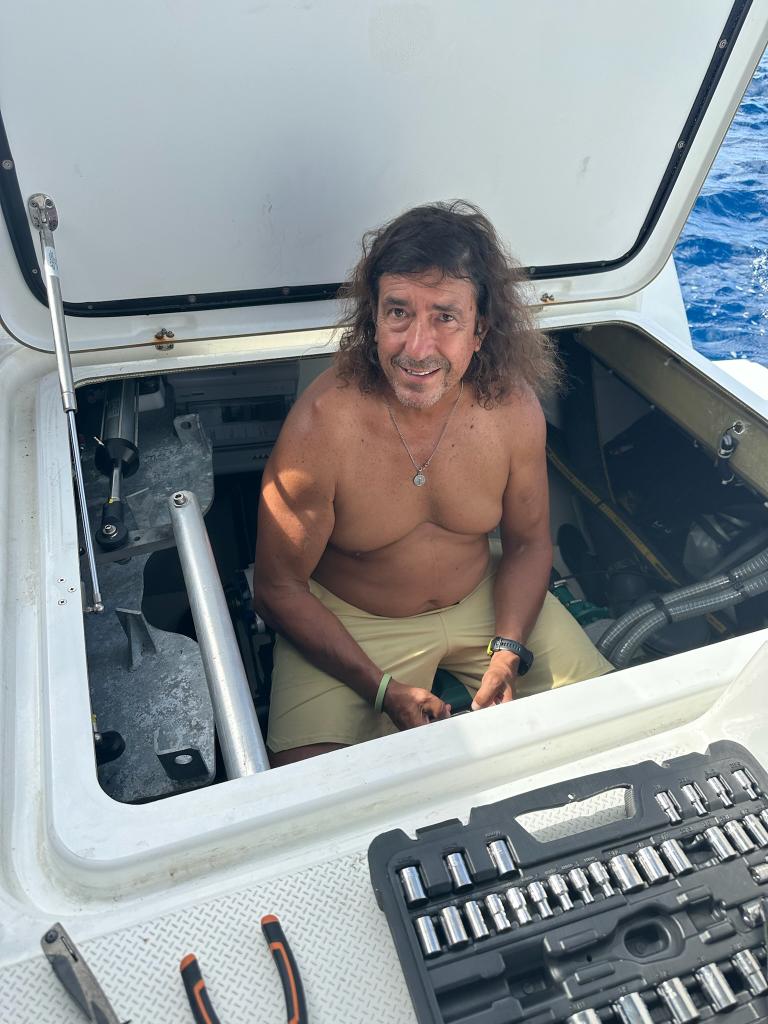
Crossing the Pacific – Equator, once we reach the equator, we make a toast to King Neptune [the only time we allow alcohol on a crossing], then the boys strip naked and swim around the boat. Alex joined the boys swimming around the boat only in a bathing suit. Boys with be boys as they giggle around the boat.
Crossing the Pacific – Ship in Distress? During Alex’s night shift she observed a bright yellow flare. Assuming this was a boat in distress signal she began checking the AIS for vessels nearby in possible distress. Not finding any and giving it much thought, Alex contacts the US Coast Guard in Alameda, California to confirm a flare sighting. The Coast Guard communicates they do not have knowledge of any ships in distress in the area. They suggest reaching out to a ship approximately 10 miles ahead of our location to see if they can confirm. Alex makes radio contact with the vessel ahead of us. They did not see a flare but did observe a shooting star. Could
this be the same? After continued thought Alex is still uncomfortable with her observation and is confident, she saw a flare and not a falling star. She contacts the Coast Guard again; they will monitor but they have nothing to report. After her shift is over, she emails the Coast Guard one more time. We were never able to confirm there was an actual vessel in distress.
Another late-night development, we were contacted by the US Coast Guard of the sailing vessel Idalina in distress. They were requesting our assistance as it appeared we were the closest vessel to help. The captain and his wife had abandoned there sinking ship and were afloat some 100 NM from our current location. We would have to turn directly into the wind and waves for a very rough ride to assist. It would take us a full day or more to reach the crew. As we were determining our appropriate approach to ensure safety of our crew, Coast Guard informed us a fishing troller successfully pick up the crew and were headed to Columba. It was scary to think of sinking your boat out in the middle of the ocean. Even with safety equipment to facilitate an evacuation.
One other late-night call from the US Coast Guard which went to Dan in Finland. Dan is Alex’s husband. He was told by the Coast Guard they had received a distress signal from Remission. Dan tried to reach Alex on her cell, no answer. Dan then tried to reach Bart or I on our cell, no answer. For 8 hours Dan was in a panic not knowing what had become of Remission. When Alex woke up the following morning, she saw all the calls to her cell and called Dan back. Understandably, Dan was in a panic and not a happy camper. Alex confirmed we were not in distress, and we were all alive and well. Follow up with the Coast Guard, they got the wrong boat and never bothered to follow up with Dan or Remission via the radio. Again, I say this all the time, SHIT only happens at night. From that point on, we all kept our phone volume on during the night.
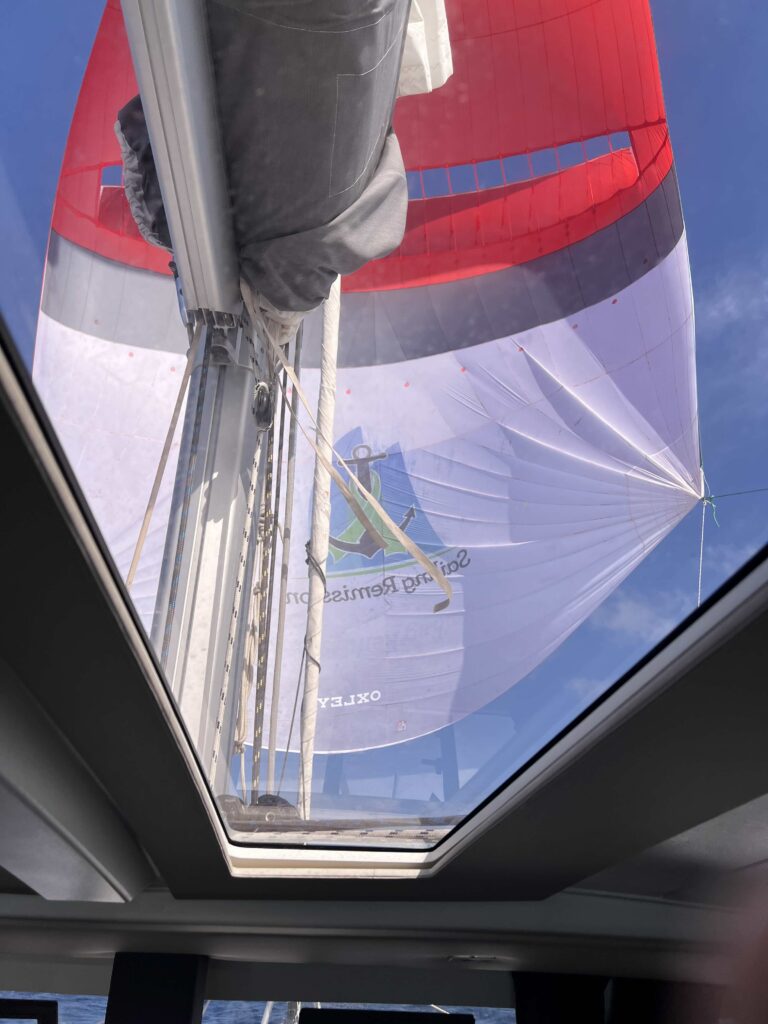
Crossing the Pacific – Parasail, finally, we reach the Tradewinds and o@ we go. We sail with the Genoa, until the winds are behind us. Up goes the parasail and it is absolutely beautiful. We normally average 100 to 110 nautical miles in a 24-hour period. With the parasail we were able to do 244
nautical miles in 24-hours. But at last, the wind exceeded 18 knots, time to take the parasail down. Of course, nothing can be that easy. Bart, Joe and Jim struggle bringing the sail down. A zipper broke on the sock tube causing the structure to fail. We ended up dropping the halyard and part of the sail went into the drink. Not our first rodeo pulling a sail out of the water. We had several tears in the sail that required mending.
The boys fished on many days. Experience tells me there are not too many fish out in the open ocean. We did stop and watch a pod of pilot whales frolicking in the water. We also saw for a fleeting moment what appeared to be an oceanic shark. Its dorsal fin was very big. One thing I have learned to hate is absentee fisherman as they tend to forget the lines are out when we must maneuver the boat quickly. Where do the lines end up? Every time, in the prop. Bart has must put on scuba gear out in the middle of the Pacific to remove the fishing line. This is not an easy task plus we must tether him to the boat, so he does not float away in the current. High risk for very little gain.
What fish we did catch, Alex was able to experience her first cleaning job. I am better at preparing the fish for the freezer or dinner.
Crossing the Pacific – Sail from Hell, at some point, the boys decided to put out the sail from hell [the Gennaker]. We have put this massive sail up three times already, all three times the sail has ended in the ocean.
This is not fun and quite frankly dangerous. We can make great progress sailing the Gennaker until … the halyard is severed again. But this time the sail is holding on a sliver of the halyard. We can only roll the sail up so far; we decide to use it like a spinnaker. This works great for several days until it is too dangerous. The crew spend hours determining how to attach the broken halyard to another line to properly bring the sail down. Bart suits up into the bosun chair, as Alex and I pull him up the mast using to topping line [he is afraid of heights], in the middle of nowhere. Luckily the wind has died down and the swells are minimal. Joe and Jim are on the bow ready to pull the Gennaker in from the ocean if required. Bart reaches the top of the 76-foot mast with just enough swing and quite a few choice words. All discussion on
knots and saving the sail from going o@ with the wind; the halyard line is cut in seconds and Bart is swearing to get him down. Joe and Jim do a great job limiting a good portion of the sail from the water, but we do incur small tears in the sail from hell. Two sails down and days to go to our destination in the Marquesas Islands.
Pacific Crossing – Water Maker Down, of course, no crossing is complete without the water maker not working. With 12 days left of our crossing we must ration our water usage which is challenging with five onboard. But we have rationed before, washing the dishes in salt water, rinsing in rainwater, final rinse in fresh water. Flushing conservatively, and baby wipe showers. Alex and I took a saltwater bath. It is not as bad as I thought, leaving our skin soft and silky. But some were not as diligent at conservation, coming up each morning from their berth smelling like roses. In the end, we landed in the Marquesas with 20% of water remaining.
Pacific Crossing – Land Ho, the auto pilot went out and we had to hand steer into the Marquesas the last 150 NM or so. We arrived in the Marquesas Island, Hiva’Oa at midnight. This is a very small, crowded and deep anchorage. Not an anchorage you want to settle into at night. So, we set Remission up to float between three blocks of land, two on each side the Hiva’Oa behind and open ocean in front. We had five miles between each island to float with little to no current to speak of. Bart gave the instructions to all to float unless we got too close to any one of the points. We are sound asleep and at 3:30 am [why does shit always happen at night] we hear the engines start – what the heck? We get a call from Joe at the helm, the coast guard is on the radio. Turns out Joe is doing donuts with the boat; I am sure the coast guard has been monitoring us throughout the night as we float. They are just checking to ensure we are ok. Indeed, we were just fine and there was no reason to reposition us with the motors. Back to get some sleep. At 7am we receive a radio call from the French Navy asking us if we could move Remission as they want to run some military exercises. We communicate we will move to the anchorage now that we have daylight.
After 31 days at sea, we are successfully anchored in Hiva’Oa, Marquesas, French Polynesia. We traveled 4,264 NM to cross the Pacific Ocean and what an adventure. Every adventure has its ups and downs but, in the end, great memories. Special thanks to Alex, Jim and Joe for joining us on this adventure. We had 56 gallons of diesel remaining. We started our journey with 248 gallons of diesel. We carry extra diesel just in case, you will remember we helped fellow sailors out with five of those gallons way back near Columba.
We started out with 200 gallons of water when the water maker broke. We ended with less than 20 gallons of water.
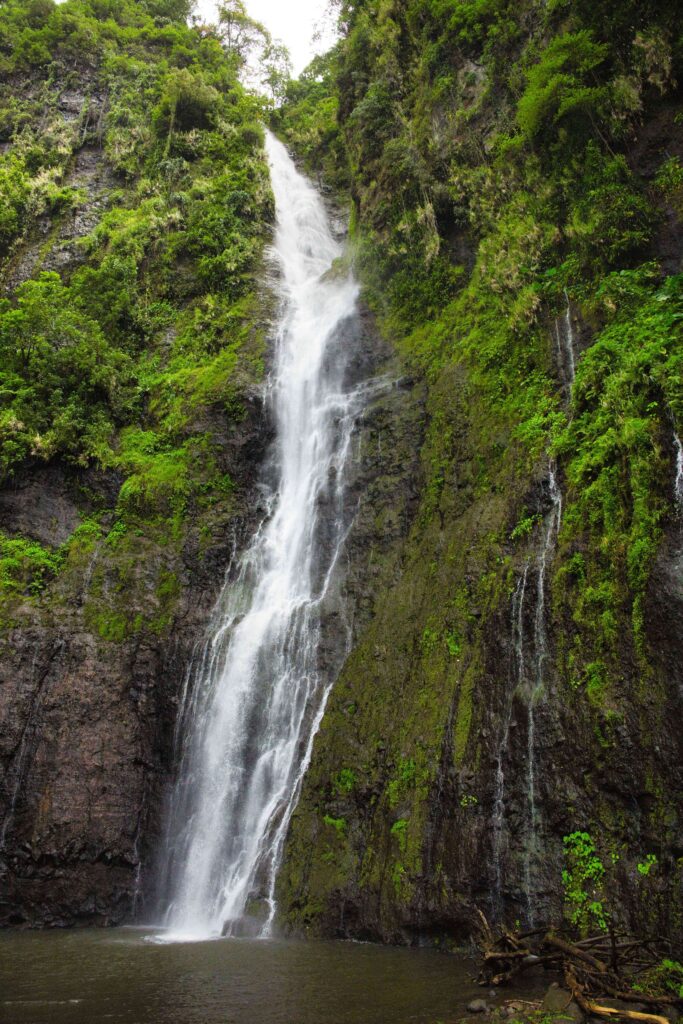
Hiva’Oa, Marquesas, French Polynesia – April 25th, known as the Garden of the Marquesas Islands due to the lush vegetation. It has rugged mountains, steep cli@s, a mix of black and white sand, and when it rains, massive waterfalls appear down the mountains. First order of business was to retrieve a part required for the water maker we ordered from Tahiti. Second order of business was to determine if fresh water was available. We scoured the town for fresh water to replenish our tanks, in the end, we purchased 5- liter bottles of water from the grocery store. This must be common as the store had plenty of fresh bottled water. Since they have no diesel dock, we had to hand carry 5-gallon jugs to the gas station, tender them back to Remission, hand empty into the diesel tanks, and back yet again. You can imagine how many times it took to fill the 250-gallon diesel tanks.
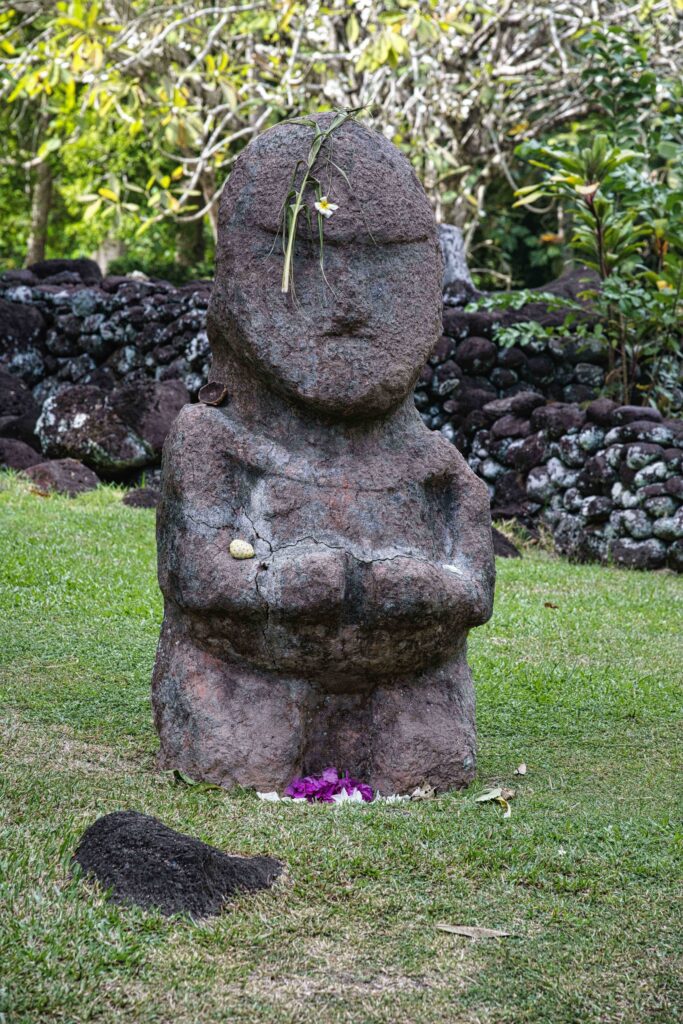
Hiva’Oa Exploring the Island, we rented a car for a couple of days to explore the island. Unfortunately, Bart had to stay on Remission as we have workers coming on board. The first day we headed out to explore Tiki Souriant. The scenic drive to the Valley of Punaei was beautiful and scary.
With drives through lush canopy trees and views of the ocean with hairpin turns, steep cli@s with no guard rail, I am not sure going up or down was worse. Not to forget the wild birds, pigs, and goats that were not intimated by our car. I stalled the manual car several time to avoid the wildlife. It had rained hard the day before, we had to dodge big and smaller boulders that had
fallen onto the road. Luckily for us, local road crew were out clearing the roads of debris. We found Le Tiki Souriant De Utukua, the tiki with a smile which is unusual for tiki art. This tiki represents Queen of Utukua.
The next day we spent exploring the other side of Hiva’Oa. We visited the grave site of Paul Gauguin in Atuona. Drove along the Taha Uku coastline. Found a beautiful stone church at the end of the road overlooking the coastline.
It was time for Joe and Jim to continue their journey in French Polynesia. They flew from Hiva’Oa to Tahiti and then ferried over to Moorea for a few extra days of rest and relaxation. Thanks Jim and Joe for joining our adventure across the Pacific Ocean. Alex stayed on Remission until we arrived in Tahiti. But before we get to Tahiti, we land in Rangiora, an atoll in the Tuamotus. Bart and I intend to head back to the Marquesas Island to explore more islands and do some hiking during our yearlong stay in French Polynesia.
Hiva’Oa to Rangiora, Tuamotus, French Polynesia is made up of three primary sections, Marquesas, Tuamotus and the Society Islands.
Rangiora is the largest atoll in French Polynesia and 2nd largest in the world. Rangiora is home to approximately 2,500 residents. We anchored in the bay outside of the town of Avatoru. We rented bikes and road to the end of the road going north. Of course, the wind was at our backs. We stopped and had a lovely lunch at a five-star trailer. We ate along the waterfront and watched sharks swim for food droppings. This chef came highly recommended, the food and beer were delicious. The ride back was quite di@icult as the wind was in our face. At times I was not sure I could make the ride back, Bart o@ered to let me draft o@ him so he could block the wind. We will be back to Rangiora to meet guests for their family vacation.
Rangiora to Tahiti, Society Islands, we set o@ for a 223 NM sail to Tahiti dropping anchor at the airport anchorage. Entering the harbor, you need to contact the port control authorities for permission to enter the harbor. Port control is monitoring the ferries, commercial freighters and tankers, pleasure
craft, surfers, and outriggers entering and exiting the harbor. Let me tell you, the ferries are not going to give way if you are in their way so best to get permission to enter the harbor. Once you have permission to enter the harbor you are instructed to stop at the Hilton Hotel for further instructions.
Unfortunately, Bart did not understand clearly and proceed beyond the Hilton Hotel. The reason why you must wait for permission to proceed is due to our mast height. The port control must communicate with the airport control tower to ensure no planes are landing or taking o@. Our mast along with most other sailing vessels is too high and an airplane can hit it as we cross the runway. Luckily, port control told us we were ok to proceed but asked Bart to follow instruction in the future. Sailing and pleasure vessels are also restricted from entering the harbor and crossing the runway path at night as our navigation lights confuse the pilots.
Alex decides to take flight from Remission and boards a ferry to tour the Society Islands for the next 15 days before heading back to Finland and Dan. She will primarily stay in hostels along the way. Bart and I stay in Tahiti to get some boat work completed. Something is always breaking on the boat.
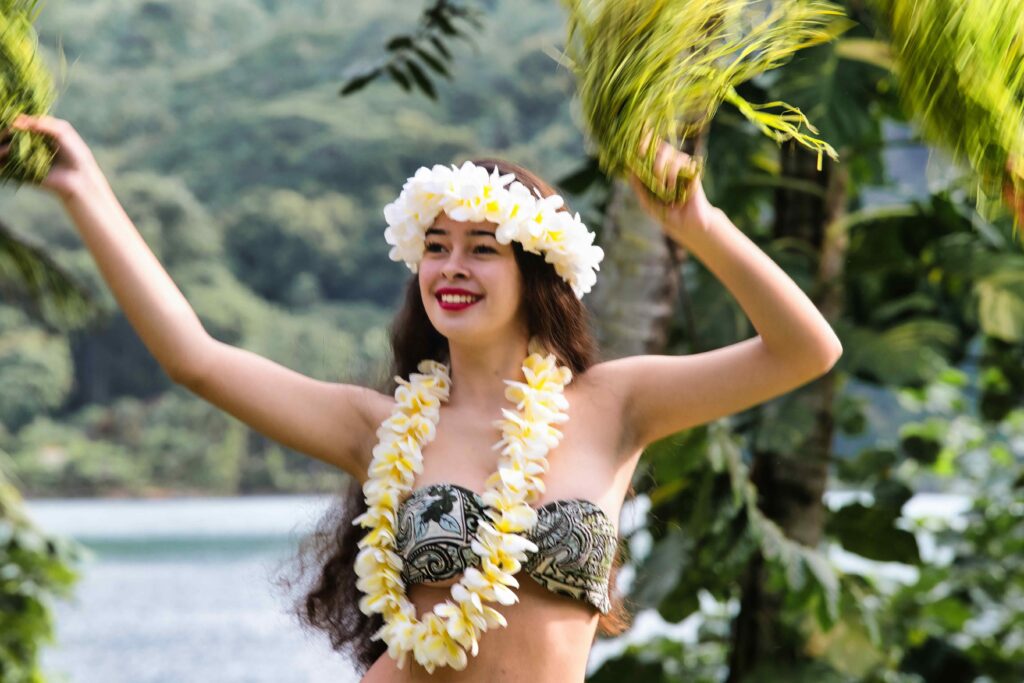
Tahiti to Moorea Regatta – June 3, we along with 30 other sailing vessels participated in a friendly Regatta. This is a 15 NM trip, which as you know, the men turned into a race. We had three Polynesian teenagers Matiaihere, John, and Matuarii on Remission to experience sailing. They were excited to see the sails go up. I asked if they want to steer the boat, no takers. Within 20 minutes, the teenagers were sound asleep for the duration of the sail. We had the lead until the wind died down. While we did not come in last, we came awfully close and had to run the engines toward the end. We enjoyed our time in Moorea with friends on Warrior and Paradise Falls.
Everyone came over for Pizza night on Remission. One of Barts many, many toys, a pizza oven. Fun times.
Moorea to Raiatea and other Society Islands – Company is coming, we are meeting our cousins Dennis and Suzi [frequent sailors
on Remission] along with my college friend Devona and her husband Billy. We visit the island to Tahaa, known for its pearl farm and vanilla farm. We visit both but spend much time and money at the pearl farm. We rent electric bikes and tour the island, a 40-mile round trip adventure. No island visit is complete until you visit the local rum distillers.
After leaving Tahaa we head to Bora Bora. We will attend the Heiva of Bora Bora. The Heiva is celebrated through French Polynesia. It is a celebration of their culture with storytelling through dance, song, and food. It was a fun evening even though we could not understand any of the story. Devona and Billy leave us in Bora Bora to stay at a resort and over water bungalows.
Having fun enjoying the air conditioning. Dennis, Suzie, Bart and I head to Huahine for a day or so. We caught up with Warrior, Paradise Falls and Chinook. Did some snorkeling and hydro foiling. Not too much interaction with our friends as they were feeling a bit under the weather. Turns out they had COVID. We skirted that one nicely.
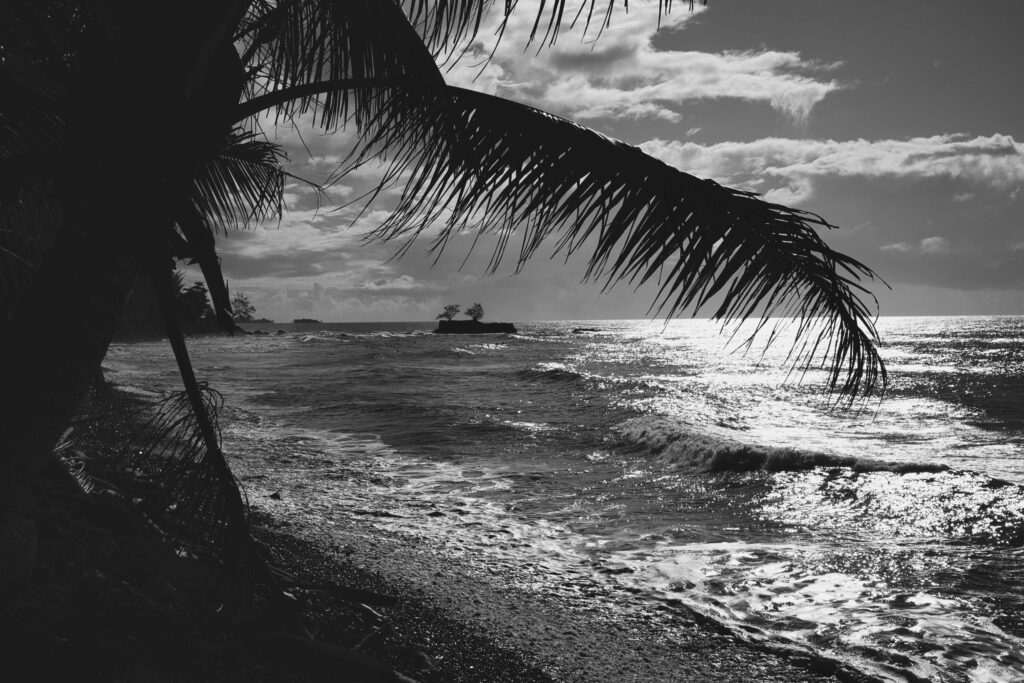
Back to Tahiti to provision – More Company Coming, after provisioning in Tahiti we set o@ for Rangiora where we will meet the Greens. They will be staying for 10 days of fun in the sun, snorkeling, snorkeling and more snorkeling. Bart certified both Larry and Daniel in scuba. They all enjoyed the hydro foil. We sailed across the atoll to the Blue Lagoon. There we experienced crystal blue water and our first humpback whale, momma and baby. It was so exciting to see the tails rise out of the water and splash back down. The day the Greens leave Remission our family begins to arrive with only hours to clean the boat. We have Regan and Kevin, Mary and Brant, Natalie and Mike joining for a fun filled 15 days. We sail back to Raiatea, Bora Bora where we spend time diving with manta rays. Bart certifies Kevin and Mike. How cool is it that Kevin’s first certified dive he is dancing with Manta Rays, he also spotted a male octopus and observed the octopus mating with a female. Pretty darn cool.
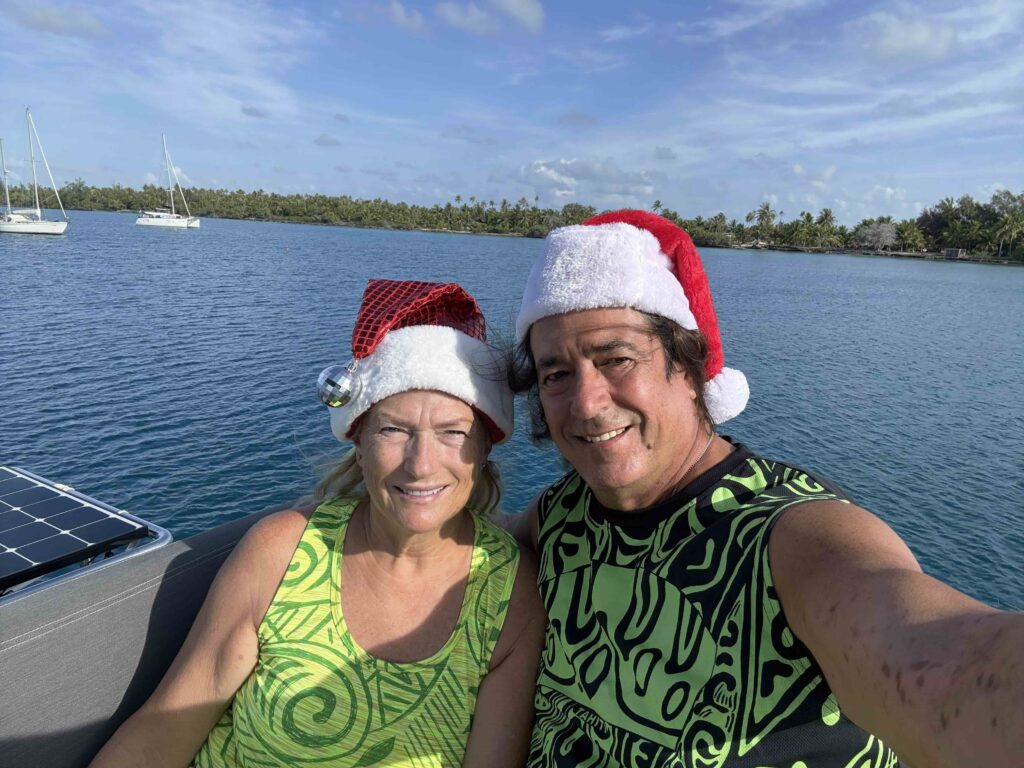
Year End in Fakarava, this quaint atoll is home to 872 inhabitants. Bart has met many as he takes his daily walk-through town with his orange
backpack. Many stop to introduce themselves and meet Bart. He is quite the socialite. We spend time on the south pass in harried weather, high winds and smashing waves. We also spend New Year’s Day diving the south pass, the wall of sharks.
Looking forward to new journeys in 2025. If you want to experience life on the water, please, come join us on Remission.
Nānā [Polynesian for Good-Bye] Cindy
